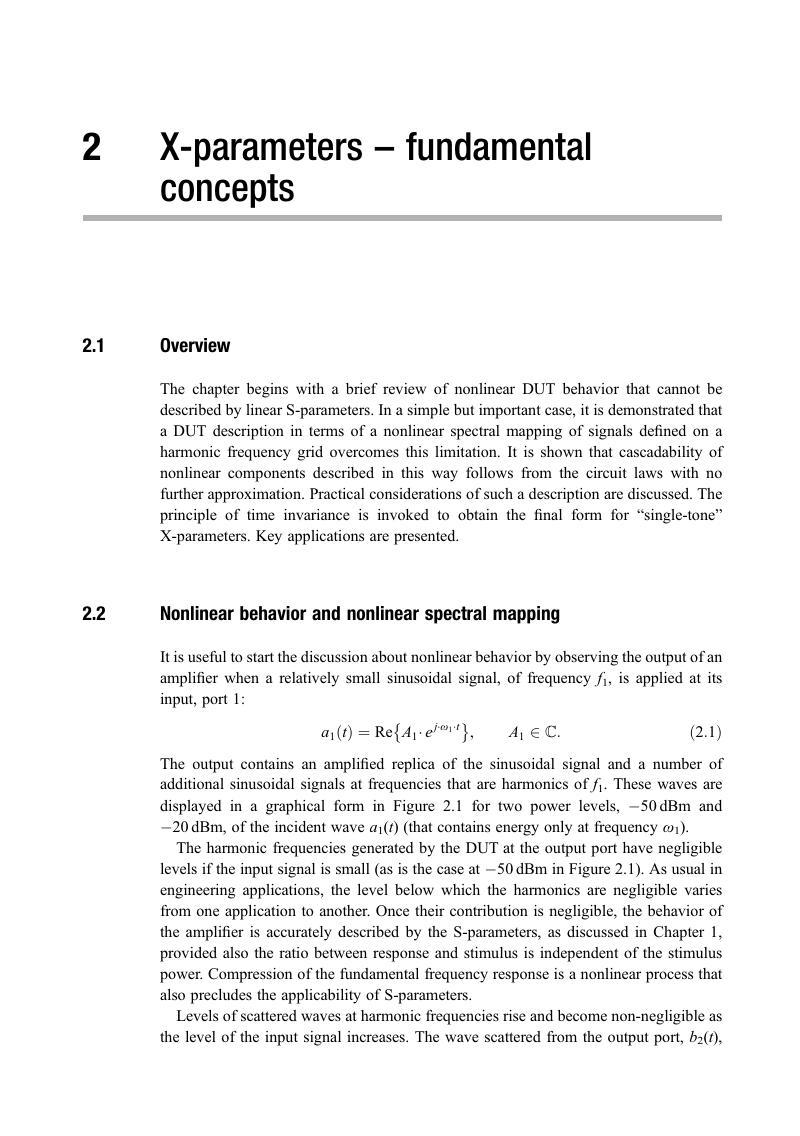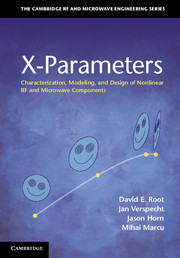Book contents
- Frontmatter
- Contents
- Preface
- Acknowledgments
- 1 S-parameters – a concise review
- 2 X-parameters – fundamental concepts
- 3 Spectral linearization approximation
- 4 X-parameter measurement
- 5 Multi-tone and multi-port cases
- 6 Memory
- Appendix A Notations and general definitions
- Appendix B X-parameters and Volterra theory
- Appendix C Parallel Hammerstein symmetry
- Appendix D Wide-band memory approximation
- Appendix E Solutions to exercises
- Index
- References
2 - X-parameters – fundamental concepts
Published online by Cambridge University Press: 05 October 2013
- Frontmatter
- Contents
- Preface
- Acknowledgments
- 1 S-parameters – a concise review
- 2 X-parameters – fundamental concepts
- 3 Spectral linearization approximation
- 4 X-parameter measurement
- 5 Multi-tone and multi-port cases
- 6 Memory
- Appendix A Notations and general definitions
- Appendix B X-parameters and Volterra theory
- Appendix C Parallel Hammerstein symmetry
- Appendix D Wide-band memory approximation
- Appendix E Solutions to exercises
- Index
- References
Summary

- Type
- Chapter
- Information
- X-ParametersCharacterization, Modeling, and Design of Nonlinear RF and Microwave Components, pp. 20 - 44Publisher: Cambridge University PressPrint publication year: 2013
References
- 2
- Cited by



